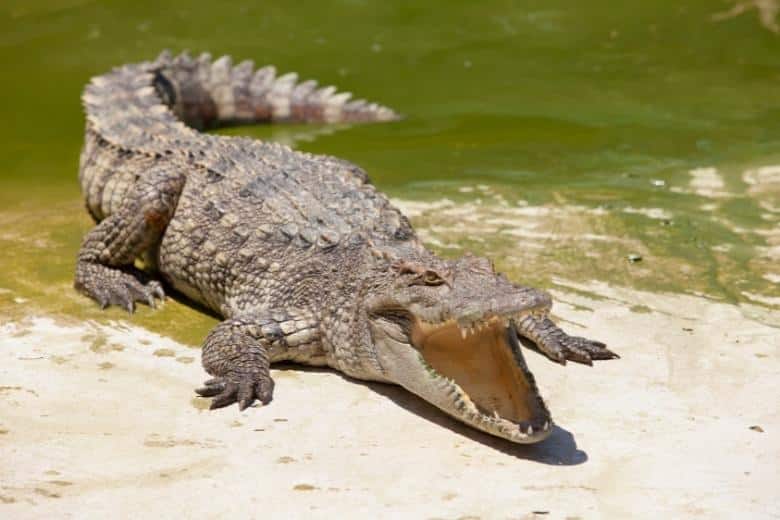Lizards are a common sight in many parts of the world, ranging from small geckos that can fit in the palm of your hand to large monitor lizards that can grow up to several feet long. As with many animals, lizards are an important part of the food chain, serving as prey for a range of predators.
In this article, we will explore the topic of what predators eat lizards, discussing the different types of animals that hunt lizards and the techniques they use to catch them.
We will also discuss the adaptations that lizards have developed to help them evade predators and the role that lizards play in the ecosystem.
Snakes as Predators
Snakes are one of the most well-known predators of lizards. They have a long, slender body that allows them to slither through narrow spaces and ambush their prey. Some of the most common types of snakes that eat lizards include:
- King snakes
- Rat snakes
- Garter snakes
- Coral snakes
- Rattlesnakes
Snakes use a variety of hunting techniques to catch lizards. Some species will actively hunt for them, while others will lie in wait for them to pass by. Once a snake has caught a lizard, it will typically constrict it until it suffocates, or it will use its venom to subdue it. Some species of snakes will swallow their prey whole, while others will tear it apart with their teeth.
Examples of snakes that eat lizards include the Western diamondback rattlesnake, which is known to prey on desert lizards, and the king snake, which is known to eat other snakes as well as lizards.
Birds as Predators
Birds are another group of animals that are known to eat lizards. There are many species of birds that will prey on lizards, but some of the most common include:
- Hawks
- Eagles
- Owls
- Falcons
Birds use a variety of hunting techniques to catch lizards. Some species will hunt for them from the air, swooping down to catch them with their talons. Others will hunt for them on the ground, using their beak to pick them up. Once a bird has caught a lizard, it will typically kill it with a quick bite to the neck or head.
Examples of birds that eat lizards include the red-tailed hawk, which is known to prey on lizards in the southwestern United States, and the barn owl, which is known to eat lizards as well as small mammals and insects.
Mammals as Predators
Mammals are also known to prey on lizards, although they are not as common as snakes and birds. Some of the most common types of mammals that eat lizards include:
- Coyotes
- Foxes
- Skunks
- Raccoons
Mammals use a variety of hunting techniques to catch lizards.Some mammals will actively hunt for lizards, while others will scavenge for them. Once a mammal has caught a lizard, it will typically kill it with a bite to the neck or head.
Examples of mammals that eat lizards include the coyote, which is known to prey on lizards in the southwestern United States, and the red fox, which is known to eat lizards as well as other small animals.
Other Predators that Eat Lizards
While snakes, birds, and mammals are the most common predators of lizards, there are other animals that will also eat them. These include:
- Other reptiles, such as monitor lizards and alligators
- Insects and arachnids, such as spiders and mantises
These animals use a variety of hunting techniques to catch lizards, depending on their size and abilities.
How Lizards Evade Predators
While lizards are a common prey item for many animals, they have developed a range of adaptations to help them evade predators. These include:
- Camouflage: Many species of lizards are able to blend in with their surroundings, making them difficult to spot by predators.
- Regeneration: Some species of lizards are able to regenerate their tails, which can distract predators and allow the lizard to escape.
- Escape tactics: Lizards are able to run, jump, and climb to escape predators.
FAQs
- Do all species of lizards have predators?
- Yes, all species of lizards have predators.
- How do lizards defend themselves against predators?
- Lizards use a range of adaptations, including camouflage, regeneration, and escape tactics, to evade predators.
- Are lizards important in the food chain?
- Yes, lizards are an important part of the food chain, providing food for a range of predators.
- Can lizards defend themselves against snakes?
- Some species of lizards have developed adaptations to help them evade snakes, such as running or jumping to escape.
- Are lizards endangered because of predation?
- Predation is one factor that can impact lizard populations, but there are many other factors that can also contribute to their decline, such as habitat loss and climate change.
Conclusion
In conclusion, lizards are a common prey item for many animals, including snakes, birds, and mammals. While they have developed adaptations to help them evade predators, they are still an important part of the food chain. By understanding the predators that eat lizards and the techniques they use to catch them, we can better appreciate the role that lizards play in the ecosystem.

